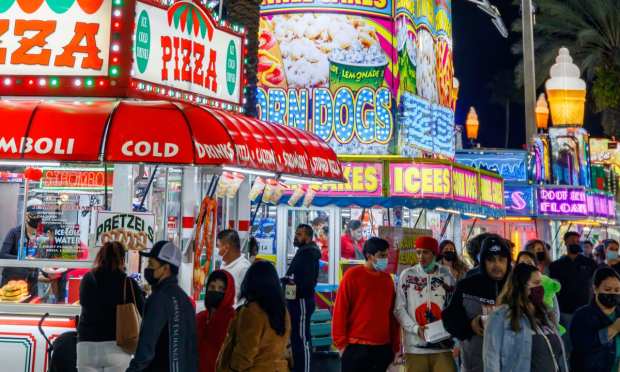The County Fair Makes A Comeback

Though the technical start of summer begins in late June, for many Americans the official start of the hot season kicks off with the Fourth of July. Fireworks, pool parties, backyard barbecues and all manner of outdoor fun are beginning to refill our barren calendars again including the re-emergence of one of the more classic of them all: the county fair.
Held in towns big and small from coast to coast every summer season, county fairs present an opportunity to eat fried dough (or friend anything, really), ride rides, taste blue-ribbon winning pies and see the many majestic wonders that one can only see at a county fair — like sculptures made of butter or Moo-la-palooza Mooing Contest which is… exactly what it sounds like.
And after being down and out in 2020, mostly canceled as a COVID-19 protection, the county fair is back nationwide in 2021 — with a few new rules in place, perhaps, but ready to rock, roll and fry things for the delight of the hundreds of thousands of consumers forecasted to come to fairs this year at record rates, and make up for the lost time.
A Brief History Of The US County Fair
The county fair is a glorious American tradition that has been around and popular longer than the U.S. has been using paper money. The original was the brainchild of Elkanah Watson, who in 1807 had the innovative idea of creating a fair-like event to celebrate local agriculture in his hometown of Pittsfield, Massachusetts. By modern standards, and even by the standards of the time, it was a small event with no rides, no pie-baking and nothing to do except watch sheep-shearing exhibitions.
But though the event was small, communities nationwide picked it up, and by September of 1841, New York organized the first State Fair at Syracuse. The New York State Fair was unique both in its size — 10,000 to 15,000 people attended — and in its expanded focus from farming products to include home goods, as well kicking off a mix of agricultural education and commerce interaction that would become a defining feature of fairs all across America.
As the 19th century turned to the 20th, county and state fairs expanded their focus again to include technological advances like electricity and airplanes. For those families who lived far from cities, annual fairs became their update on modern science, as they often provided the first glimpse of new technologies that might soon be made available to them. The 20th century also saw the addition of musical performances, vaudeville entertainers, carnival rides and other general amusements, all of which became a standard part of the repertoire. Fairs have stuck with this lineup to great success through the modern day, keeping county fairs around and well-attended even as other popular entertainments of the past have faded.
There are approximately 2,000 county and state fairs nationwide, the largest of which, such as the State Fair of Texas or the Erie County Fair in New York, routinely draw in more than a million attendees each year.
The Great Comeback
Except for last year, of course, as the global pandemic forced the cancellation of the vast majority of America’s state and county fairs to protect against the spread of COVID-19 in the usually tightly-packed seasonal events.
But 2021 has come, vaccines are out and in wide circulation in the United States, and county and state fairs are poised to make a comeback, according to reports. A comeback that devotees like 14-year-old farmer Dalton Mowbray has been eagerly anticipating for the last year as he’s been preparing his hogs to take home a ribbon at the Iowa State Fair.
“At the state fair, I’ve had a few ribbons,” Mowbray modestly told the Chicago Tribune. Noting that his plans to take his three best pigs to the biggest livestock competition in the Midwest. “I think there’s potential for all of them to do well.”
Attendees from all over the surrounding states and even beyond thinking there’s a potential for them to do well by hitting the fair this year.
“People are ready to get out and do things,” Jerry Costello, director of the Illinois Department of Agriculture, told the Tribune. “We’ve got 366 acres. There’s room, obviously, to have plenty of people in an outdoor environment.”
